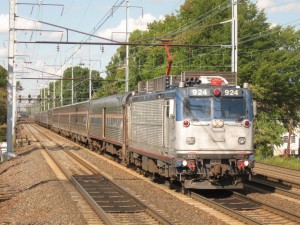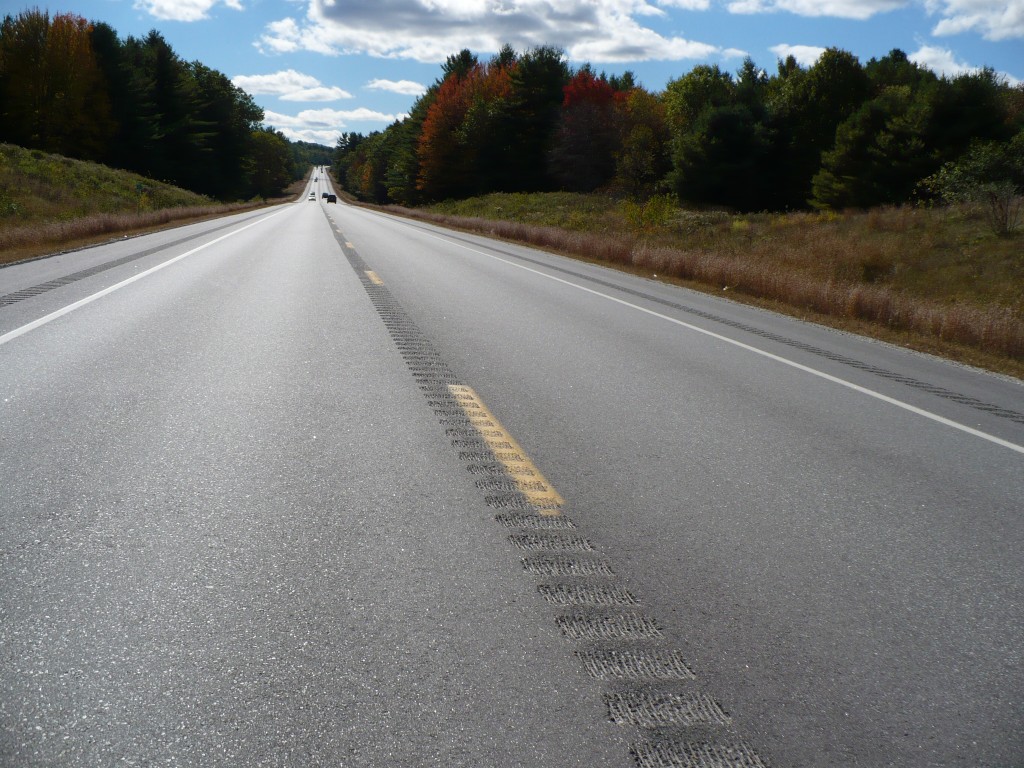Alexis Pancrazi, Blueprint America
Our unity as a nation is sustained by communication of thought and by easy transportation of people and goods. Together, the unifying forces of our communication and transportation systems are dynamic elements in the very name we bear — United States. Without them, we would be a mere alliance of many separate parts.
–President Eisenhower, 1955
When Dwight Eisenhower took office in 1953, and began talking eloquently about connecting America by road, it was by no means a revolutionary idea. The Public Roads Administration had already created an interstate system and dreamed up the idea it might one day extend over 40,000 miles. What Eisenhower did was make that dream a reality by coming up with a plan for funding its construction. He garnered national support with these helpful explanatory videos:
Eisenhower pushed forward the famous Federal-Aid Highway Act of 1956 which, armed with a financial plan, passed with overwhelming congressional support. And the end results were extraordinary—42,795 miles of standardized roads, 54,663 bridges over 1.6 million acres of land at the projects completion in 1991.
But the path to the finished interstate system was as bumpy as the old roads it replaced. Although the interstate system had been very popular with national and local interests alike when the act was passed, opposition soon mounted, particularly among the cities that were forced to accommodate these new super highways.
After only one year, critics began to call for the construction of urban highways to be suspended for the purposes of re-examining land use development. Eisenhower’s vision came into doubt. After two high-ranking highway officials spoke about the interstate at a conference in 1957, one witness expressed anxiety about the project, as, “neither of these administrators had the slightest notion of what they were doing.”
When the government decided to pump more money into the program after a recession in 1957, fiscal accountability was called into question—the term “ninety-itis” was bandied about, indicating that highway officials were spending recklessly knowing the federal government covered 90% of their costs.
Congress seemed to turn against the program, as representatives began to make speeches on the floor blaming a shortage of government funds on unnecessarily wasteful highway budgets. The Wall Street Journal was quoted in 1960 as describing the interstate highway system as “[a] vast program thrown together, imperfectly conceived and grossly mismanaged, and in due course becoming a veritable playground for extravagance, waste and corruption.”
And opposition wasn’t limited to rhetoric: in Boston resistance broke out when a super highway through the city ravaged historic districts and pushed many residents out of their homes. In Baltimore, a grassroots movement rose up to challenge, and defeat, the decision to divide the city between the wealthy and the working class. The urban roads were usually slated to go through the poorest parts of town—which often happened to also be the blackest, thereby stirring the already-boiling pot of race relations. After a massive riot in 1967 in Detroit, Michigan, which resulted in 43 dead, Governor George Romney cited the freeway construction as a major catalyst.
The interstate highway system came about with fits and starts—it was a “Grand Plan,” but also at times a painful and mistrusted one. Yet, even before it was finished, it had changed the rhythm of American life. It built upon and delivered the American dream of a house and a car; populated suburbs and made vacationing easier; brought the masses McDonalds and Holiday Inns; offered easier transport of goods to regions outside of cities; and trucking became one of America’s stalwart industries. Which is not to say it’s been all fun times and road trips. The interstate also gave us sprawl, exhaust pollution, and, of course, McDonalds. While not all of these changes were for the better, what would America be like without it?
President Obama’s similarly expansive vision–a network of high speed intercity rail trains–has already fallen victim to criticism. His opponents suggest that passenger interest doesn’t warrant such a large investment ($8 billion in the Recovery and Reinvestment Act) and will result in a system financially bloated and underused, a blackhole of taxpayer dollars to upkeep.
And for others, his plan is too measured. It focuses on improvements to existing Amtrak lines, raising speeds, but  not to the 220 miles per hour that would match bullet trains in Europe. Rail proponents would prefer larger investments in just a few corridors where distances are long enough to allow for higher speeds, and where ridership has high projections. The pro-rail community is concerned that any failed lines will provide fodder for critics.
not to the 220 miles per hour that would match bullet trains in Europe. Rail proponents would prefer larger investments in just a few corridors where distances are long enough to allow for higher speeds, and where ridership has high projections. The pro-rail community is concerned that any failed lines will provide fodder for critics.
Perhaps the lesson here is that any big plan is bound to have its share of critics and opponents. But how close in comparison is Obama’s plan to Eisenhower’s interstate? In broad strokes both aim to knit together the country with a state of the art transportation system, but beyond that it’s hard to tell where the similarities begin and end.



